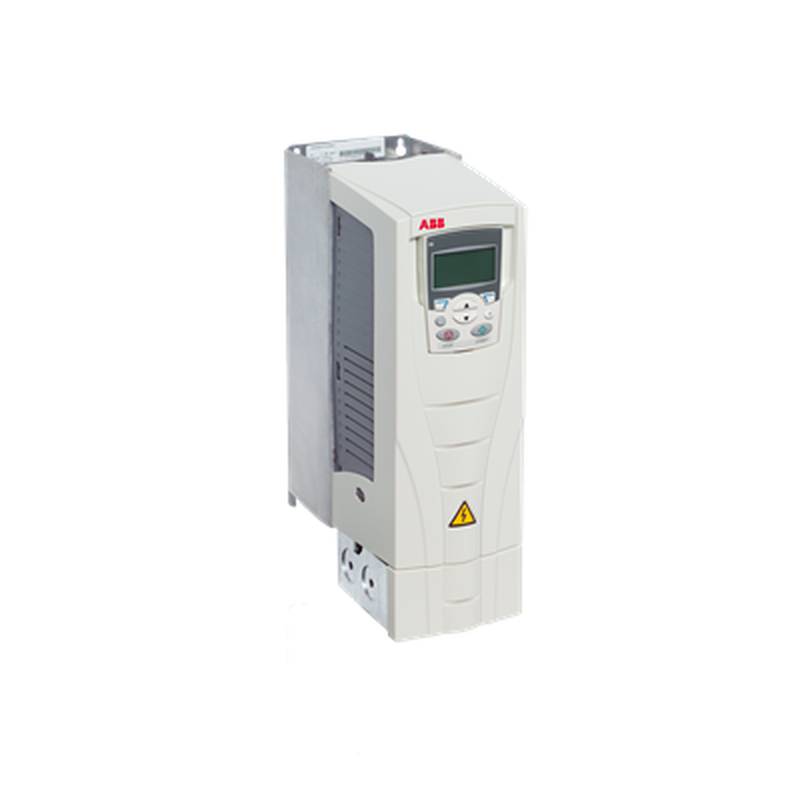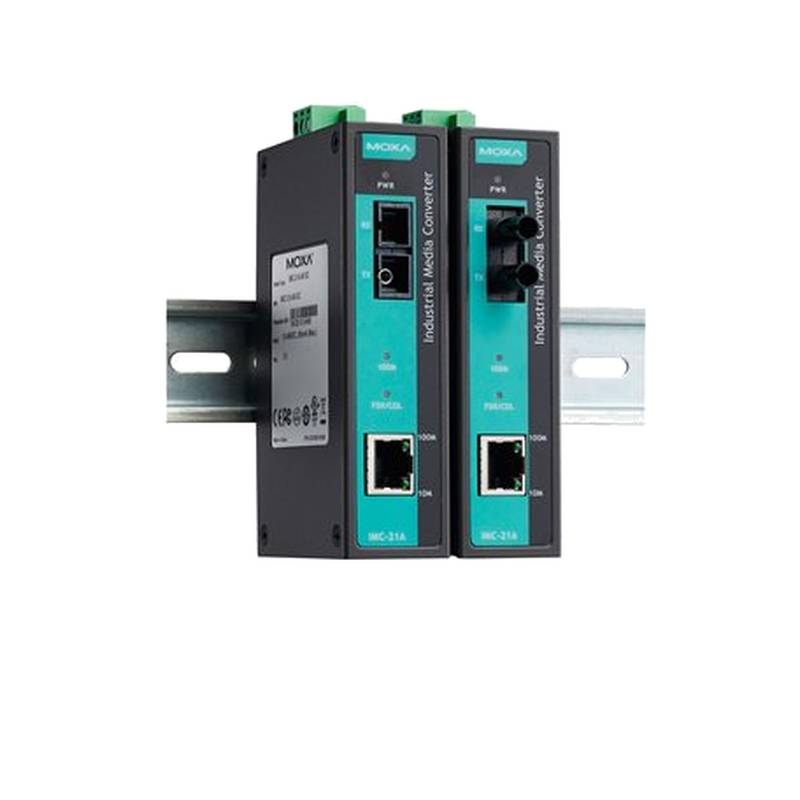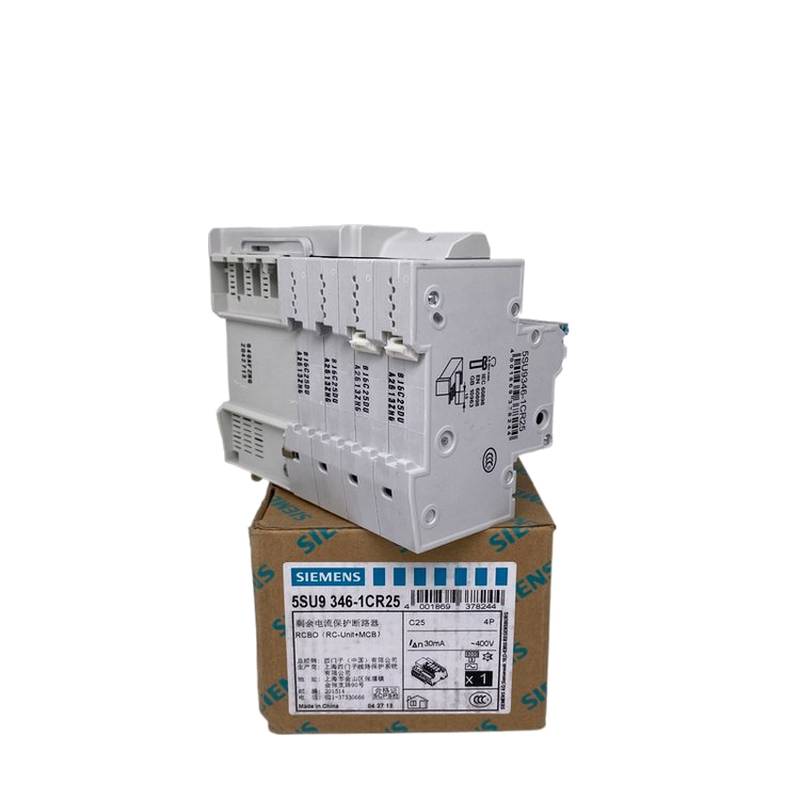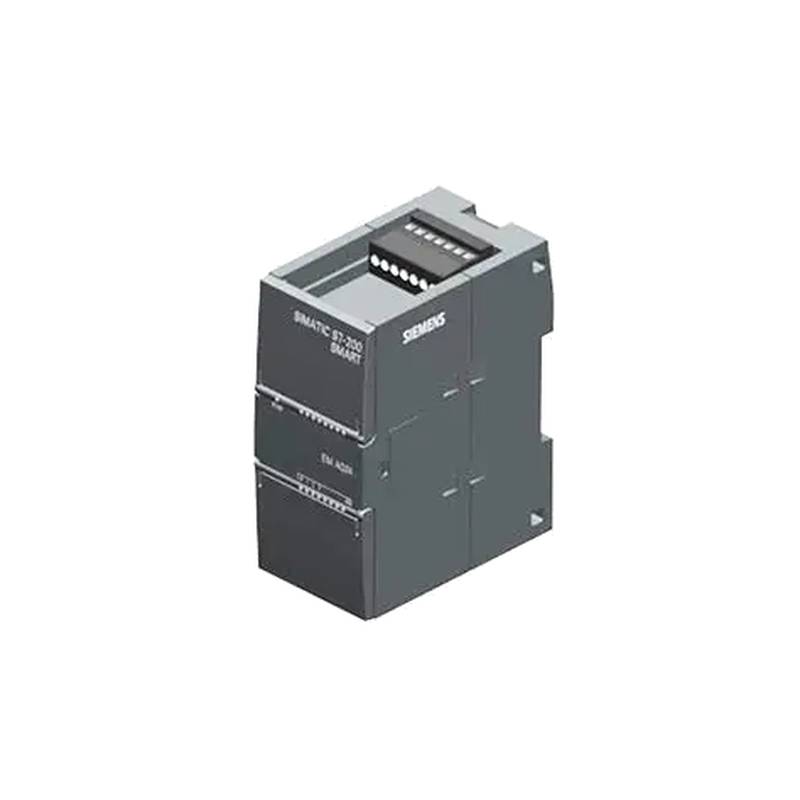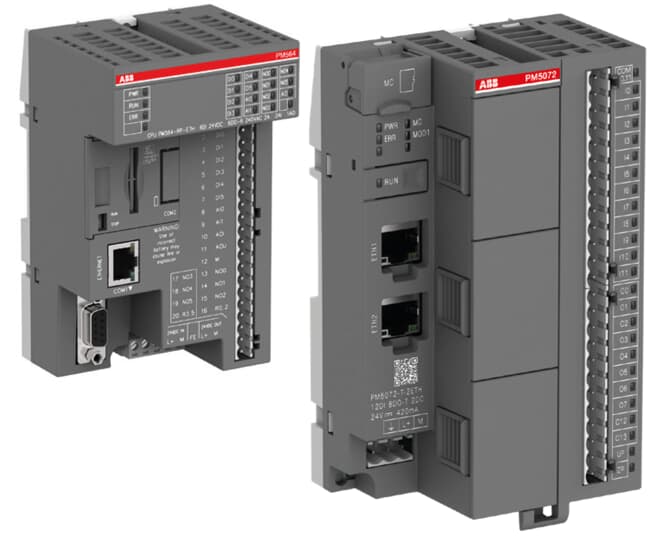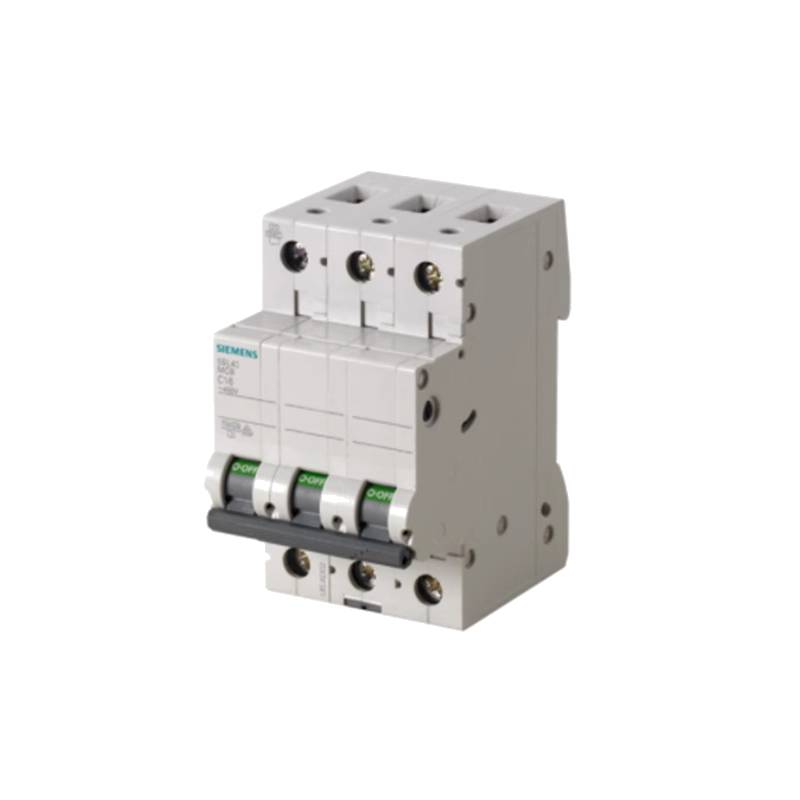
The ABB ACS510-01-07A2-4 is a robust and versatile standard model inverter designed for a wide range of industrial applications. This unit excels in delivering precise motor control, enhanced energy efficiency, and reliable operation across various demanding environments. Its core advantages lie in its user-friendly interface, compact design, and robust feature set that simplifies installation and commissioning. Key technical parameters include a rated power of 3.0 kW (4 HP), an input voltage range of 380-480V AC, and an output current of 7.2A. The ACS510 series is built for adaptability, offering multiple programmable I/O options and communication protocols to seamlessly integrate into existing control systems.
Product Specifications
| Parameter | Value |
| :-------------------- | :-------------------- |
| Model | ACS510-01-07A2-4 |
| Rated Power | 3.0 kW / 4 HP |
| Input Voltage | 380-480V AC |
| Output Current | 7.2A |
| Output Frequency | 0-500 Hz |
| Dimensions (H x W x D) | 305 x 145 x 165 mm |
| Protection Class | IP21 |
| Ambient Temperature | -10°C to +40°C |
Core Features & Market Positioning
The ABB ACS510-01-07A2-4 distinguishes itself with its intuitive "Start-up Assistant" and "FlashDrop" tool, significantly reducing commissioning time and effort. This user-centric design philosophy, coupled with ABB's reputation for industrial automation excellence, positions the ACS510 series as a cost-effective yet highly capable solution for general-purpose variable speed drive needs. Its robust construction and adherence to international standards ensure dependable performance in dusty or humid conditions, a critical factor for many industrial settings. The integrated cooling system and over-temperature protection further enhance its reliability, making it a preferred choice for applications where uptime is paramount.
Key Application Scenarios
This inverter is ideally suited for a broad spectrum of industrial applications, including pump and fan control, conveyors, mixers, and general machinery. Its precise speed regulation and torque control capabilities make it an excellent choice for processes requiring consistent performance, such as maintaining flow rates in pumping systems or ensuring uniform mixing. The ACS510-01-07A2-4's energy-saving features are particularly beneficial in fan and pump applications, where variable speed operation can lead to substantial reductions in energy consumption compared to fixed-speed systems. Industries such as water treatment, food and beverage, HVAC, and material handling frequently leverage the ACS510 for its efficiency and adaptability.
Practical System Integration Guidance
Integrating the ABB ACS510-01-07A2-4 into existing systems is streamlined due to its flexible I/O configuration and multiple fieldbus options. The unit supports standard wiring practices, with clear terminal designations for power, control, and communication signals. Programming the drive is facilitated through the intuitive control panel or via PC-based software tools, allowing for customization of parameters to match specific application requirements. For system builders and maintenance engineers, understanding the default parameter settings and the sequence of operations for commissioning is crucial for optimal performance and safety. The drive's modular design also allows for straightforward replacement of components if necessary, minimizing downtime.
Operation and Risk Mitigation
Safe and efficient operation of the ABB ACS510-01-07A2-4 relies on adherence to installation guidelines and proper parameterization. Users must be aware of potential hazards associated with variable frequency drives, such as high voltages and rotating machinery. Common troubleshooting scenarios often involve checking motor connections, verifying input power, and reviewing parameter settings related to motor data and application control. Critical error codes, such as overcurrent (OC), overvoltage (OV), and undervoltage (UV) faults, typically indicate issues with the motor, power supply, or load, and require systematic diagnosis. Regular maintenance, including checking for dust accumulation and ensuring adequate ventilation, is essential for preventing operational issues and extending the drive's lifespan.
Scalability & Long-Term Value
The ABB ACS510-01-07A2-4 offers long-term value through its robust design and compatibility with ABB's broader automation ecosystem. While it represents a standard model, its underlying technology is part of a scalable platform that allows for integration into more complex control architectures as needs evolve. Its support for various communication protocols enables seamless connection to SCADA systems and IIoT platforms, facilitating remote monitoring, diagnostics, and data analysis. This forward-looking capability ensures that investments in the ACS510 contribute to a more connected and intelligent industrial environment, providing a solid foundation for future automation upgrades.
Frequently Asked Questions
Q1: What is the typical power range for the ABB ACS510-01-07A2-4?
The ABB ACS510-01-07A2-4 is rated at 3.0 kW, which is equivalent to 4 horsepower. This power output is suitable for a variety of industrial motor applications.
This specification makes it a versatile choice for medium-duty tasks, balancing performance with energy efficiency. It's designed to drive motors effectively within its designated power envelope.
The drive's robust design ensures it can handle continuous operation at its rated capacity, providing reliable motor speed control for various machinery.
Q2: What is the input voltage requirement for this ABB inverter?
This ABB inverter operates on a standard industrial input voltage range of 380 to 480 Volts AC. This broad range accommodates common power grids in many regions globally.
Ensuring the supply voltage falls within this specified window is critical for the safe and optimal operation of the ACS510-01-07A2-4. Incorrect voltage can lead to performance issues or damage.
Users should confirm their facility's power supply characteristics match these requirements before installation to guarantee compatibility and prevent operational faults.
Q3: What are the primary benefits of using the ABB ACS510-01-07A2-4?
A key benefit is its ease of use, featuring an intuitive "Start-up Assistant" for quick commissioning. This significantly reduces setup time and complexity for engineers.
The drive also offers excellent energy savings, particularly in variable torque applications like fans and pumps, leading to lower operating costs.
Furthermore, its compact IP21 enclosure provides protection against dust and drips, making it suitable for diverse industrial environments and ensuring operational longevity.
Q4: Can the ACS510-01-07A2-4 be used for pump and fan applications?
Yes, the ABB ACS510-01-07A2-4 is highly effective for controlling pumps and fans. Its variable speed capabilities allow for precise flow and pressure regulation.
This drive enables significant energy efficiency gains in these applications by matching motor speed to actual demand, reducing power consumption.
By optimizing performance for pumps and fans, the ACS510 helps extend the lifespan of connected equipment and minimizes mechanical stress.
Q5: What is the output current rating of the ACS510-01-07A2-4?
The ABB ACS510-01-07A2-4 inverter delivers a maximum output current of 7.2 Amperes. This rating dictates the size of the motor it can effectively control.
This current capacity is appropriate for motors within its specified 3.0 kW power range, ensuring adequate torque delivery for the intended applications.
Users must ensure that the motor's full load current does not exceed the drive's 7.2A output rating to prevent overload conditions and ensure reliable operation.
Q6: How is the ABB ACS510-01-07A2-4 installed and commissioned?
Installation involves mounting the drive in a suitable location, ensuring adequate ventilation, and making proper power and motor connections per the manual. The unit supports standard wiring practices.
Commissioning is simplified by the built-in "Start-up Assistant" and the optional "FlashDrop" tool, which allow for rapid parameter configuration and motor setup.
After initial setup, thorough testing and parameter fine-tuning are recommended to optimize performance and ensure safety protocols are correctly implemented for the specific application.
Q7: What types of industrial environments is this inverter suitable for?
The ACS510-01-07A2-4 features an IP21 enclosure, offering protection against solid objects greater than 12.5 mm and vertically falling water drops. This makes it suitable for many general industrial settings.
It can be installed in environments where dust and moisture are present, but not in highly corrosive or extremely wet conditions. Adequate ventilation is crucial for maintaining optimal operating temperatures.
Users should consider the ambient temperature range of -10°C to +40°C and ensure the drive is protected from direct sunlight and excessive heat sources for reliable long-term operation.
Q8: Does this ABB inverter support common communication protocols?
Yes, the ACS510 series, including the ACS510-01-07A2-4, supports various fieldbus protocols. This allows for integration into industrial automation networks.
Common protocols may include options for Modbus RTU, DeviceNet, Profibus DP, and others, enabling communication with PLCs and control systems. Specific options depend on the installed communication modules.
This capability is vital for remote monitoring, control, and diagnostics, facilitating integration into IIoT platforms and centralized control architectures.
Q9: What are some common error codes for the ABB ACS510 series?
Common error codes include OC (Overcurrent), indicating the motor current exceeds limits, and OV (Overvoltage) or UV (Undervoltage), related to the input power supply.
Other frequent fault indications might involve thermal issues (overheating), external fault signals, or motor control parameter discrepancies. Each code typically corresponds to specific diagnostic information.
Referencing the product manual is essential for understanding the exact meaning of each error code and the recommended troubleshooting steps for resolution.
Q10: How does the ACS510-01-07A2-4 contribute to energy efficiency?
The drive's primary contribution is through variable speed control, allowing motor speed to be adjusted precisely to the load requirements, thereby reducing energy consumption.
In applications like pumps and fans, this can lead to energy savings of up to 50% or more compared to traditional fixed-speed motor control methods.
Additionally, features such as optimized ramp times and energy optimizer functions further enhance efficiency by minimizing energy waste during acceleration and operation.














